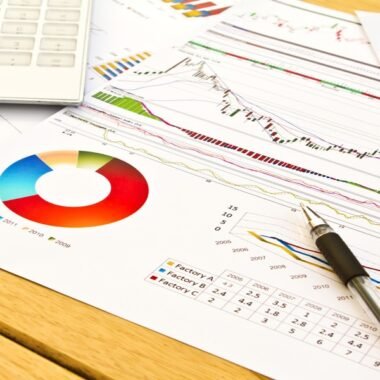Summary: This blog provides a comprehensive overview of statistical tools for data-driven research. It covers fundamental concepts, core techniques, software options, best practices, case studies, and future trends. Researchers across disciplines will find valuable insights to enhance their Data Analysis skills and produce credible, impactful findings.
Introduction
Statistical tools are essential for conducting data-driven research across various fields, from social sciences to healthcare. They enable researchers to collect, analyse, and interpret data effectively, leading to informed conclusions and decisions.
This blog will explore the fundamental aspects of statistical tools, their core techniques, software options, best practices, case studies, future trends, and address frequently asked questions.
Understanding Statistical Tools
Statistical tools encompass a range of techniques and software that facilitate the analysis of data. They serve to transform raw data into meaningful information, enabling researchers to identify patterns, test hypotheses, and draw conclusions.
Understanding these tools is crucial for any researcher aiming to conduct rigorous and credible studies.
Types of Statistical Tools
Understanding these categories is essential for researchers to select the appropriate methods for Data Analysis and effectively interpret their findings. Statistical tools can be broadly classified into two categories: descriptive statistics and inferential statistics.
Descriptive Statistics
These tools summarise and describe the features of a dataset. Common measures include mean, median, mode, and standard deviation. They provide a snapshot of the data, allowing researchers to understand its basic characteristics without making inferences about a larger population.
Inferential Statistics
These tools allow researchers to make predictions or inferences about a population based on a sample. Techniques include hypothesis testing, regression analysis, and ANOVA (Analysis of Variance). They are essential for determining the significance of research findings and for generalising results beyond the sample studied.
Read More:
An Introduction to Statistical Inference
Core Statistical Tools and Techniques
Researchers widely use several core statistical techniques. Understanding these tools is fundamental for effective Data Analysis.
Hypothesis Testing
Hypothesis testing is a method used to determine whether there is enough evidence to reject a null hypothesis. Common tests include the t-test, chi-square test, and F-test. Each of these tests serves specific purposes, such as comparing means or assessing relationships between categorical variables.
Regression Analysis
We use it to understand the relationship between dependent and independent variables. It helps researchers predict outcomes and identify trends. Linear regression, logistic regression, and multiple regression are common forms of this analysis.
ANOVA (Analysis of Variance)
ANOVA compares means across multiple groups to determine if at least one group mean significantly differs from the others. Researchers find it particularly useful in experiments comparing multiple treatments.
Explore in-depth on Statstical Tools, Methods and Examples.
Statistical Software and Tools
The advent of technology has led to the development of various statistical software tools that simplify Data Analysis. Here are some of the most widely used statistical software:
R
R is a powerful open-source programming language specifically designed for statistical computing and graphics. It offers extensive libraries for data manipulation, statistical modeling, and visualisation. R is particularly popular in academia and among statisticians due to its flexibility and comprehensive capabilities.
Python
When it comes to a powerful and versatile programming language, Python takes the lead. Python, with libraries such as NumPy, Pandas, and SciPy, is increasingly used for statistical analysis. Its versatility allows integration with web applications and data pipelines, making it a favourite among data scientists.
SPSS (Statistical Package for the Social Sciences)
SPSS is widely used in social sciences for its user-friendly interface and robust statistical capabilities. It allows users to perform complex analyses without extensive programming knowledge, making it accessible for researchers from various backgrounds.
SAS (Statistical Analysis System)
This comprehensive software suite enables advanced analytics, business intelligence, and data management. It is particularly strong in data manipulation and statistical analysis, making it a staple in many industries, including healthcare and finance.
Stata
It is a powerful statistical software used for Data Analysis, management, and graphics. It is particularly popular among researchers in economics, sociology, and political science due to its user-friendly interface and robust capabilities.
GraphPad Prism
GraphPad Prism is designed for scientific research, particularly in the life sciences. It combines scientific graphing, comprehensive statistics, and data organisation, making it a preferred choice for biostatisticians.
Best Practices for Using Statistical Tools
To ensure the validity and reliability of research findings, adhering to best practices when using statistical tools is essential. Researchers should also utilise visualisation techniques to enhance data interpretation and ensure ethical considerations are integrated throughout the analysis process.
Understand the Data
Before applying any statistical tool, researchers should thoroughly understand their data, including its structure, types, and underlying assumptions. This understanding guides the selection of appropriate statistical methods.
Choose the Right Statistical Test
Selecting the correct statistical test is crucial. Researchers should consider the research question, data type, and distribution when choosing a test. Misapplication of tests can lead to incorrect conclusions.
Check Assumptions
Many statistical tests have underlying assumptions (e.g., normality, homogeneity of variance). Researchers should verify these assumptions before conducting analyses. If assumptions are violated, alternative methods or transformations may be necessary.
Report Results Transparently
When presenting statistical findings, transparency is key. Researchers should report effect sizes, confidence intervals, and p-values, along with a clear explanation of the statistical methods used.
Use Visualisation Tools
Data visualisation enhances understanding and interpretation of statistical results. Tools like graphs, charts, and plots can effectively communicate findings and reveal patterns that may not be immediately apparent in raw data.
Case Studies and Examples
Case studies and examples illustrate the practical application of statistical tools across diverse fields. By showcasing real-world scenarios, they demonstrate how researchers effectively utilise techniques like regression analysis and ANOVA to derive insights, inform decisions, and drive impactful outcomes in their respective domains.
Medical Research
In clinical trials, statistical tools are vital for determining the efficacy of new treatments. For example, a study comparing a new drug to a placebo might use a t-test to assess differences in recovery rates. The results guide medical practitioners in treatment decisions.
Social Sciences
In social research, regression analysis is often used to explore relationships between variables. For instance, researchers might examine the impact of education level on income using multiple regression, allowing them to control for other factors like age and gender.
Market Research
Businesses frequently use statistical tools to analyse consumer behaviour. A company might employ ANOVA to compare customer satisfaction ratings across different products, helping to identify which product features resonate most with consumers.
Future Trends in Statistical Tools
The future of statistical tools is poised for transformation, driven by advancements in artificial intelligence, machine learning, and real-time data analytics. These innovations will enhance predictive capabilities, democratise data access, and enable more effective decision-making across various industries. Some emerging trends include:
Integration of AI and Machine Learning
The integration of artificial intelligence (AI) and machine learning with statistical tools is revolutionising Data Analysis. These technologies enable more sophisticated analyses and predictive modelling, enhancing the accuracy of research findings.
Increased Accessibility of Tools
Open-source software like R and Python is making statistical analysis more accessible to researchers without extensive training in statistics. This democratisation of Data Analysis tools is fostering innovation and collaboration across disciplines.
Real-time Data Analysis
With the rise of Big Data, the ability to analyse data in real-time is becoming increasingly important. Tools that can process and analyse large datasets quickly will be crucial for timely decision-making in various fields, including healthcare and finance.
Focus on Data Ethics
As data collection and analysis become more pervasive, ethical considerations are gaining prominence. Researchers are increasingly expected to address issues related to data privacy, consent, and the responsible use of statistical methods.
Conclusion
Statistical tools are indispensable for data-driven research, providing the means to analyse and interpret complex datasets. Understanding the core techniques, software options, and best practices is essential for researchers aiming to produce credible and impactful findings.
As technology continues to advance, the future of statistical tools promises to enhance the capabilities of researchers across disciplines.
Frequently Asked Questions
What are the Typical Applications of Statistical Tools?
Statistical tools are used to support claims, analyse vast datasets, visually represent complex information, and conduct hypothesis testing across various fields, including healthcare, social sciences, and business.
Are There Any Free Statistical Tools Available?
Yes, numerous free statistical tools are available, including R, Python (with libraries like Pandas and NumPy), and various online calculators. These tools provide robust capabilities for Data Analysis without the need for expensive software.
Can I Perform Statistical Analysis Using Tableau?
Yes, Tableau is a powerful data visualisation tool that includes built-in statistical capabilities. It allows users to perform trend analysis, summarise data, and explore datasets interactively, enhancing understanding and interpretation of statistical results.




